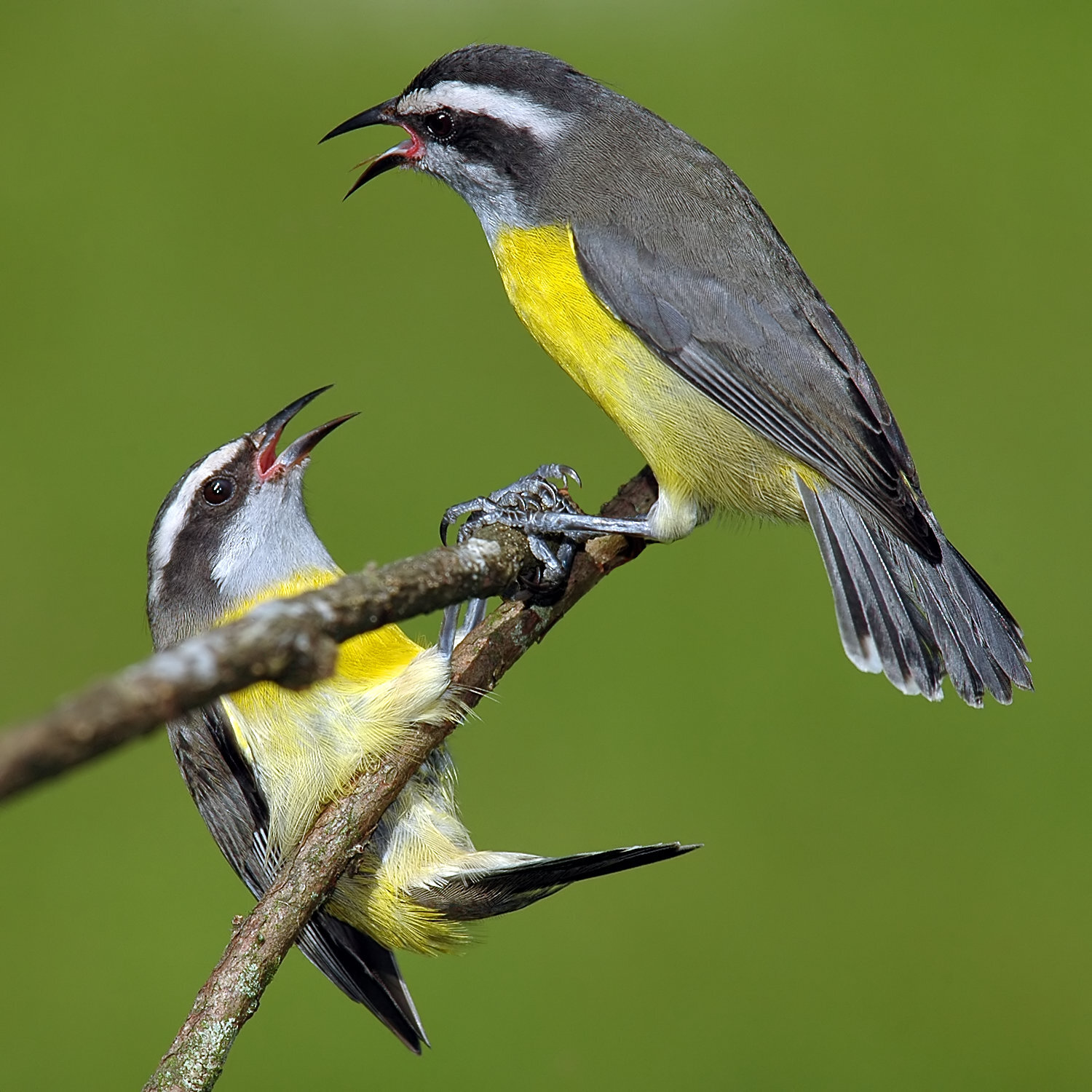Bananaquit
Bananaquits by Leon Bojarczuk
Scientific Name: Coereba flaveola
Range: Mexico, the Caribbean, Central & South America
Habitat: Shrubland, Gardens,Forest Borders
Breeding Season: March - June
Clutch Size: 2 - 3 eggs
Description
The Banaquit is a small native bird primarily bright yellow and black/dark gray in colour with a distinct white eyebrow. The chest, belly and rump are a bright yellow while the feathers on its back and wings are dark gray. The crown and sides of its head is black with a white eyebrow and white/pale gray throat and a black bill curved downward.
On average the Bananaquit is 10 - 11 cm long and weighs between 6.40 to 14.20 g.
It is commony found singly, in pairs or family groups perched on tree branches.
Range
It is native to many tropical countries and can be found across Mexico, Central and South America and the Caribbean.
Habitat
The Bananaquit lives in a variety of habitatats such as shrubs, semi - open areas and lowland forest edges.
Diet
They feed on nectar, fruit, insects and spiders.
It’s long, sharp bill allows it to easily pierce fruits and suck nectar from flowers with long tubular corrollas. Bananaquits often feed while clinging downward and commonly get into fights with other bananaquits or other nectarivorous bird species over food.
Breeding
Banaquit breeding season takes place during the months of March to June where successful breeding will produce a clutch size of 2 -3 eggs. Bananaquit eggs are dull white with brown spots.
The eggs are then incubated by the female for approximately 2 weeks after which the fledglings spend an additional 2 to 3 weeks in the nest before leaving.
Conservation Status
Least Concern
Song
A series of high - pitched thrills.
